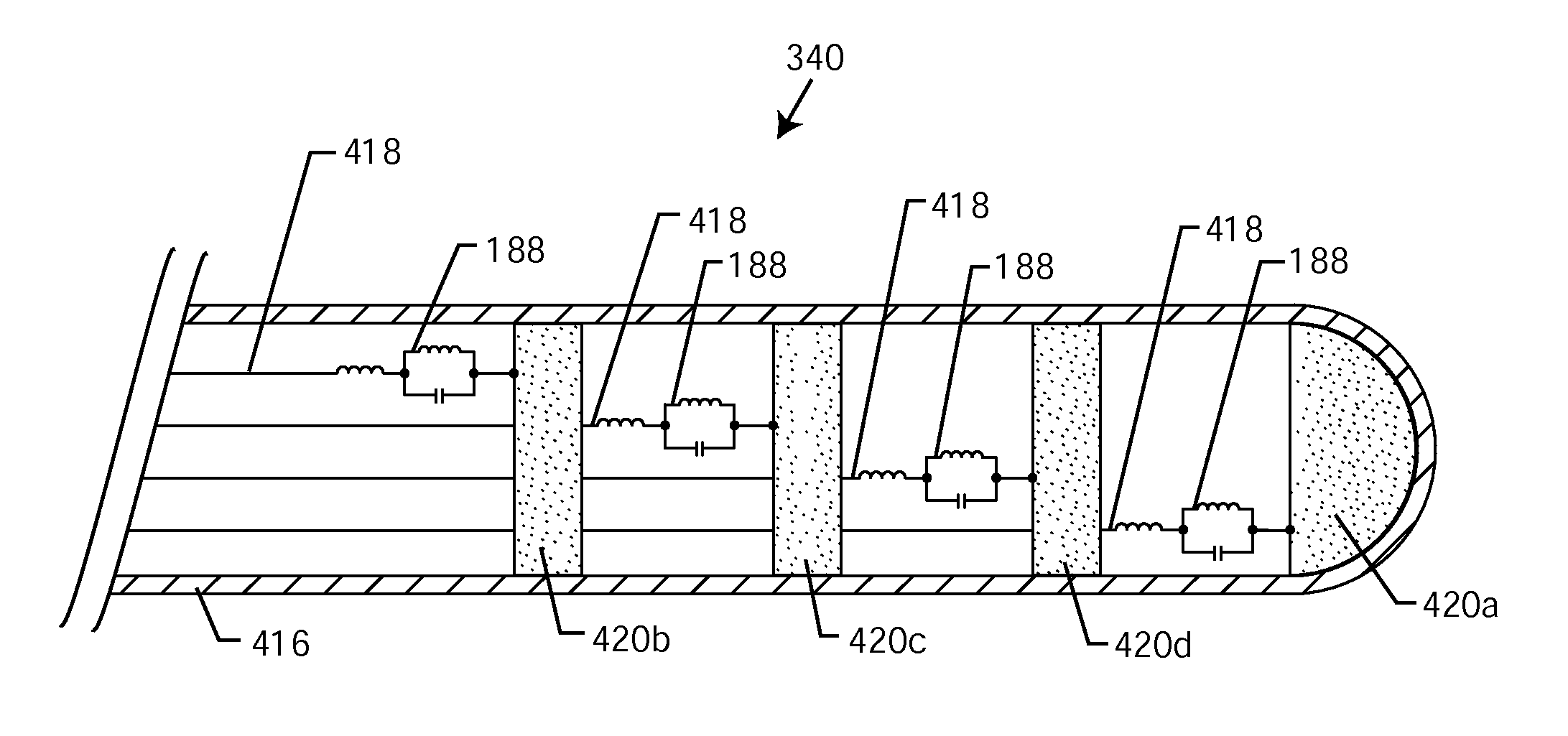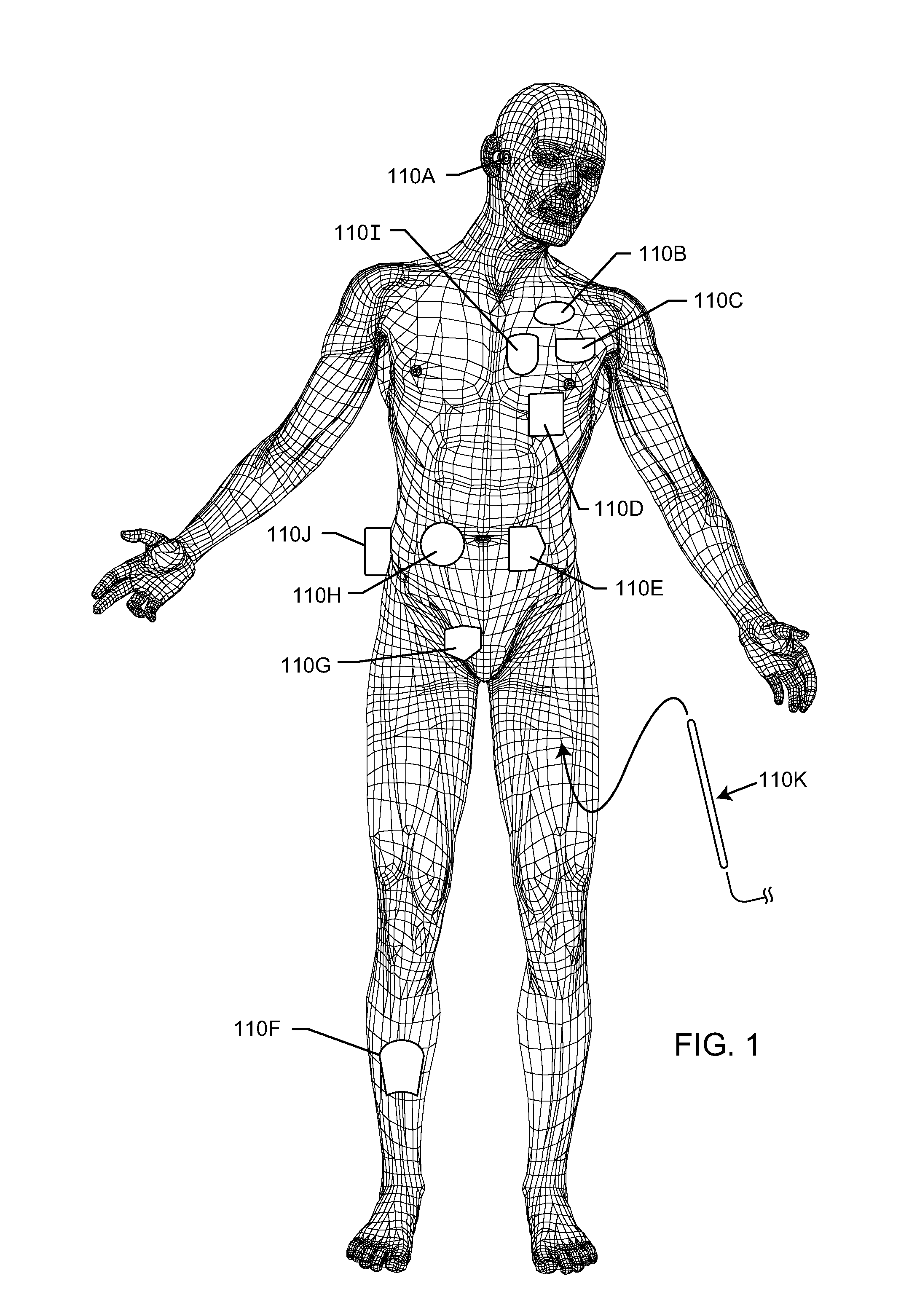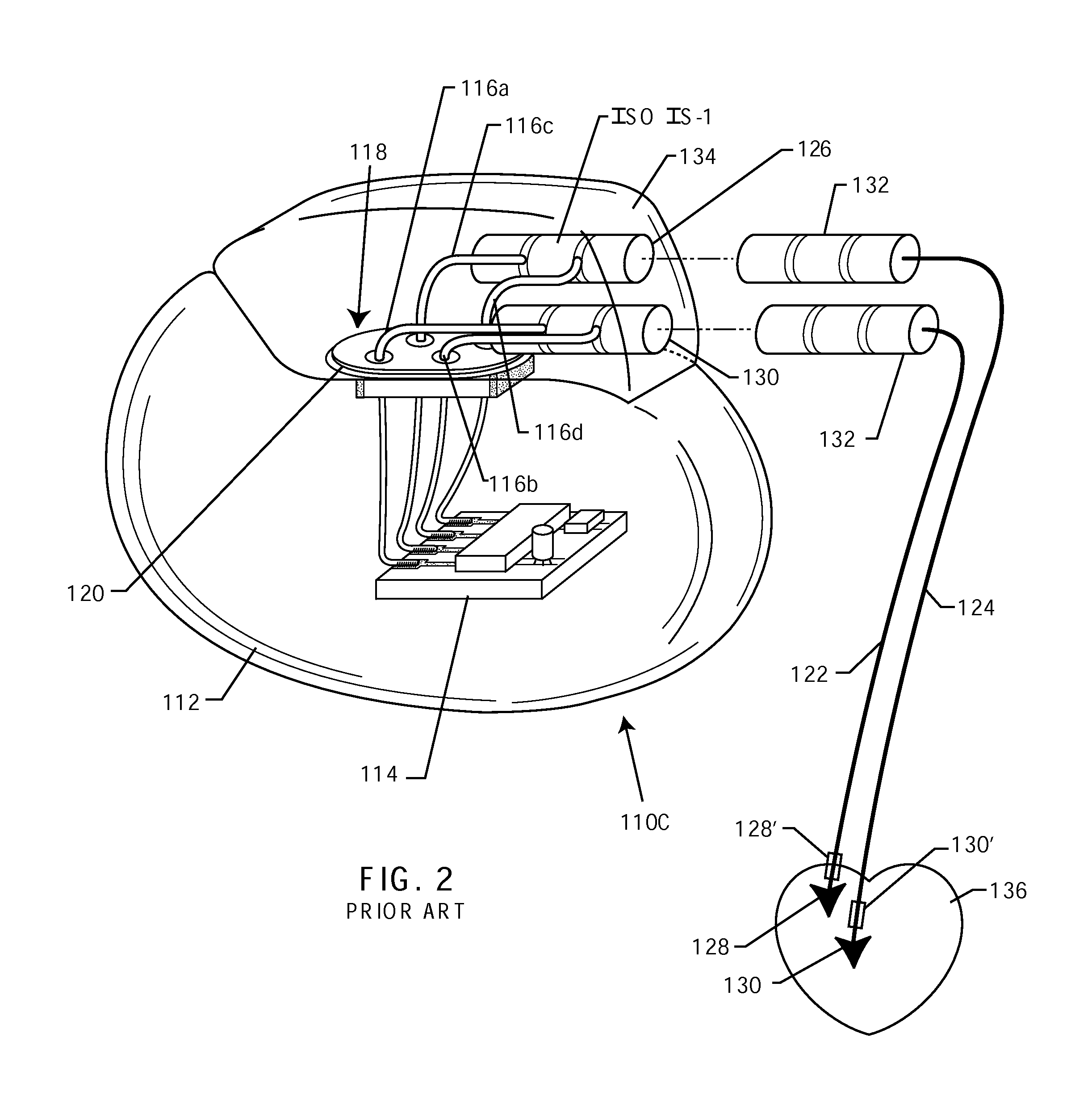Composite RF current attenuator for a medical lead
- Summary
- Abstract
- Description
- Claims
- Application Information
AI Technical Summary
Benefits of technology
Problems solved by technology
Method used
Image
Examples
Embodiment Construction
[0156]The present invention is directed to medical lead systems comprising an implantable lead having a proximal end and an electrode contactable to biological cells at a distal end. At least one broadband lowpass filter, such as an inductor is disposed in series with a bandstop filter and is associated with a lead conductor forming a composite RF current attenuator for attenuating current flow through the lead over a range of RF frequencies. In general, the broadband lowpass filter can consist of an inductor, L, LL, Pi, T-filter or multi-element filter or the like. The bandstop filter, which is in series with the lowpass filter, has an overall circuit Q wherein the resultant 3 dB bandwidth is at least 10 kHz and where the bandstop filter comprises a capacitance in parallel with an inductance, wherein values of capacitance and inductance are selected such that the bandstop filter is resonant at a selected center frequency. The selected center frequency is an MRI RF pulsed frequency....
PUM
 Login to View More
Login to View More Abstract
Description
Claims
Application Information
 Login to View More
Login to View More - R&D
- Intellectual Property
- Life Sciences
- Materials
- Tech Scout
- Unparalleled Data Quality
- Higher Quality Content
- 60% Fewer Hallucinations
Browse by: Latest US Patents, China's latest patents, Technical Efficacy Thesaurus, Application Domain, Technology Topic, Popular Technical Reports.
© 2025 PatSnap. All rights reserved.Legal|Privacy policy|Modern Slavery Act Transparency Statement|Sitemap|About US| Contact US: help@patsnap.com



